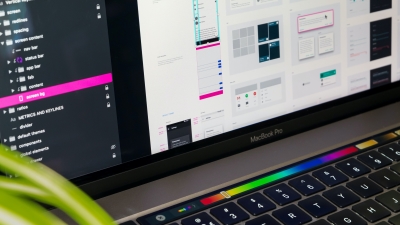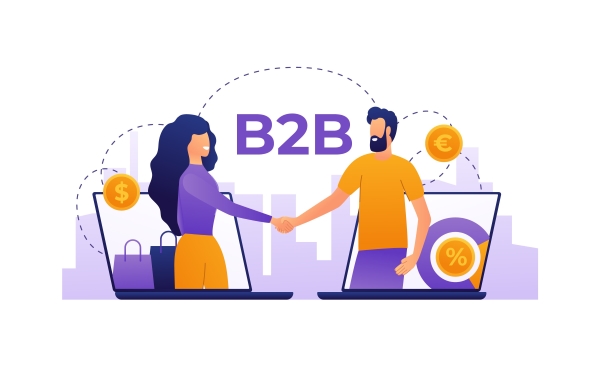Mobile app development is becoming increasingly popular as people are developing their own mobile apps to increase their market value and attract users, and investors. According to Statista, it is estimated that the mobile app market will reach approximately $613 billion by 2025. But mobile app development is no easy task that can be done within a day and hours. It is a complex process that involves planning, researching, coding, creating wireframe designs, and testing. This process also requires a significant amount of time, money, and resources. We are going to break down the cost of mobile app development and discuss the factors affecting the cost.
Different Costs Involved in the Mobile App Development
When comes to mobile app development the question that arises the most is how much it is going to cost to develop a mobile app. The answer to this question is not a straightforward amount; it varies for everyone based on their mobile app requirements. According to an article based on current trends and market analysis, the average cost of developing a mobile app in 2023 can range from $30,000 to $250,000. Of course, it can be lower or higher depending on the complexity of the mobile app. The cost of mobile app development will vary based on several factors, including the number of hours required, the hourly rate of the development team, available resources, and other things involved. You can read our article on how to make a budget for an app. Let’s see the different stages of mobile app development and the cost breakdown of each stage.
1. The Cost of App Strategy
The first step is to build a proper app development strategy and obviously, it going to cost a certain amount. The average cost of developing a mobile app strategy is $5,000. This includes having a clear vision of what your product offers, what features and functionality it will provide to users, and understanding your target audience's needs. Conduct extensive market research to determine what your competitors are offering, their strengths, and weaknesses. Identify what you can offer that they are not providing. The cost also depends on the complexity of the features your app will have. If you are building a Minimum Viable Product (MVP) for your app, the cost will also depend on that process.
2. The Cost of App Design
Once the app strategy is in place, it's time to move on to app design. App designing involves wireframes, prototypes, user interface (UI), and user experience (UX). Wireframes and prototypes provide a visual representation of the app's layout and functionality. UI involves creating visual elements such as icons and buttons, while UX focuses on enhancing user experience through features like navigation and scrolling bars, ensuring positive user interactions. The average cost of developing a mobile app design is $6,000. However, the cost of the app will vary depending on the complexity of the app design. The more features, the higher the price will be. Apps that have complex and additional features will cost more. For designing the app, a well-experienced designer is required. The prices of the designers vary from place to place. It is important to invest in the app design phase as the first impression of the app matters a lot to make it more user-friendly and appealing.
3. The Cost of App Development/Coding
The most expensive and time-consuming phase of this process is app development which involves the actual coding of the app. Mobile app development phase costs from $10,000 to $100,000. The cost depends on choosing an experienced team of developers. However, it is important to choose a good developer who can provide exactly what you want. We provide high-quality app development solutions at Zee Palm.
4. The Cost of App Testing
The next step is testing the mobile app, which is a crucial step before launching the app. The cost of average cost of app testing is between $2,000 and $10,000.The cost involved here includes testing for bugs, identifying errors, and checking for any vulnerabilities that could lead to hacking or app crashes. App testing is an essential phase, and it's important to allocate a sufficient budget for it. You can also involve some users to test your app. If there is any crash or any other problem that exists it will be fixed here in the testing phase. Otherwise, it will be a huge disgrace for the company if anything happens after the launch, which could negatively impact the company's reputation in the market. We at Zee Palm offer QA testing within the development charges, so you don't need to pay anything extra.
5. The Cost of App Deployment
Once the app is tested thoroughly and approved, it's time for the app to be deployed to any app store. This phase involves submitting the app to the Apple App Store and Google Play Store. The cost here depends on which platform you are deploying the app on. Certain charges for app submission need to be paid. It is important to follow the rules and guidelines otherwise your app can get rejected or fined. The average cost of deploying a mobile app is $5,000.
6. The Cost of App Maintenance
The last step of this process is maintaining the app. It is an ongoing process. After the app's launch, there might be bugs and errors that require fixing. Updates are necessary after taking feedback from users such as adding new features or removing some. Ensuring security is also a huge part, different security updates and measures should be applied so the app won't be vulnerable to hackers. If you choose the MVP approach, the maintenance cost varies as the app continues to develop over time. The average cost of maintaining a mobile app is $10,000 per year. The cost in this phase varies significantly because it is largely based on how your app is developed. For some, the maintenance cost is even higher than the development cost, while for others, it may be rather a small amount.
Ways to Reducing the Cost of Mobile App Development
Here are some ways to reduce the cost of app development.
- Having a clear goal of what your app will provide can help reduce the cost of mobile app development. Once you have a clear goal you can manage to control the budget.
- Building an MVP can help a lot in reducing the cost as you launch the app with essential features and continue to develop it further based on user feedback over time.
- Thorough market research can significantly help as you learn about what your target audience needs and what your competitors don't provide.
- Don't overcomplicate your app, minimize the number of features and functionalities, and only include those that are essential and desired by users.
- Outsource development to a low-cost country can save you a lot of money but it is important to choose the right company and developers to ensure you don't get low-quality work.
For custom software development, visit us at Zee Palm
To buy premium front-end flutter kits, visit Flutter Coded Templates
Check out free Flutter Components, visit Flutter Components Library








